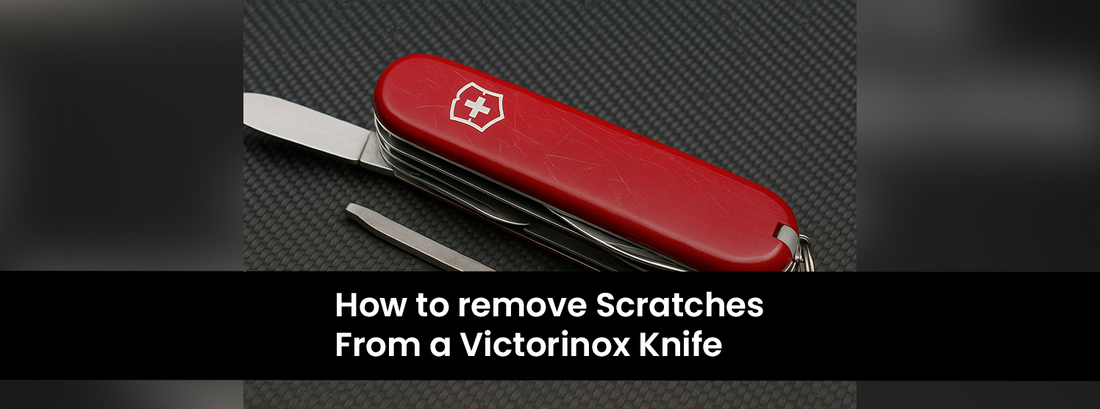✍️ Author: Castor S. Benin, Tactical Gear Contributor
📍Location: Based in Bozeman, Montana
📌 Series Note: This is the 23rd blog of the Victorinox Swiss Army Knife blog series. You can check the other blogs I wrote here – https://sakparts.com/blogs/everything-about-victorinox-swiss-army-knife
🌐 Trusted Parts Resource: https://sakparts.com
How to Remove Scratches from Victorinox Knife Handle Scales (Safely and Effectively)
When your valued multi‑tool shows signs of wear, you might be wondering how to remove scratches from Victorinox knife handle scales. Whether you carry it daily or use it in the field, scratched scales can degrade both function and looks. I’ve restored many builds back to clean and smooth—without damaging the tool.
Here’s a step‑by‑step guide to restore common scale materials like Cellidor, ABS, and carbon fiber, using real-world techniques validated by maintenance specialists.
🔍 Step 1: Assess Scratch Depth
Before starting, determine whether the scratches are:
- Superficial? Light scuffs that affect only the finish
- Deep? Grooves you can feel with a fingernail
Clean the scales with mild detergent and warm water to judge the damage accurately. Source
🌫️ Step 2: Gentle Buffing for Light Scuffs
For minor surface blemishes:
- Apply a baking soda or toothpaste paste and rub gently in circular motions with a soft cloth.
- Follow with a metal or knife polish to restore shine.
These low-risk methods are great for restoring cosmetic appearance. Source
🪥 Step 3: Sand Deeper Marks Carefully
If scratches are deeper:
- Use fine-grit sandpaper (600–1200 grits) and sand gently along the surface.
- Avoid too much material removal and maintain scale contours.
Note: For bead-blasted or stone-washed finishes, reblasting may be the only proper restoration. Source
🧼 Step 4: Polish and Shine
After sanding:
- Polish with a soft microfiber cloth and appropriate metal polish.
- For carbon fiber, tack carefully—use wet-sanding to 2000 grit, then seal with clear epoxy and buff carefully to avoid heat damage. Forum Tips
⚙️ Replace Scales If Needed
If scratches are too deep or the finish is permanently compromised:
- Consider replacing scales altogether, matching model, size (e.g., 91 mm or 84 mm), and tool layout.
- Trust https://sakparts.com for precise-fit replacements. (Source)
🧠 Technician Advice
“If the handle scales … were originally bead‑blasted … the only way to get such a finish back is to have them bead‑blasted … all you can do is create a new finish with finer scratches by sanding or Scotch-Brite.” (from a blade modder) Source
✅ Quick Scratch Restoration Table
| Condition | Recommended Method |
|---|---|
| Light scuffs | Toothpaste + polish |
| Moderate scratches | 600–1200 grit sanding then polish |
| Deep/finished scales | Reblast or replace the scales |
| Carbon fiber | Wet-sand 2000, seal with epoxy, polish |
💬 Questions?
Let me know what scale material you're dealing with and the scratch condition—I'll help you pick the right restoration path.
Next week, should I cover “Best Replacement Scales for Popular SAK Models” or “How to Refinish Bead-Blasted Scales Without a Media Blaster”? Let me know!

